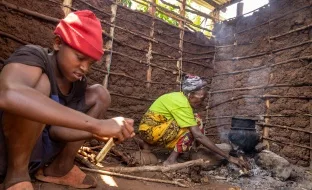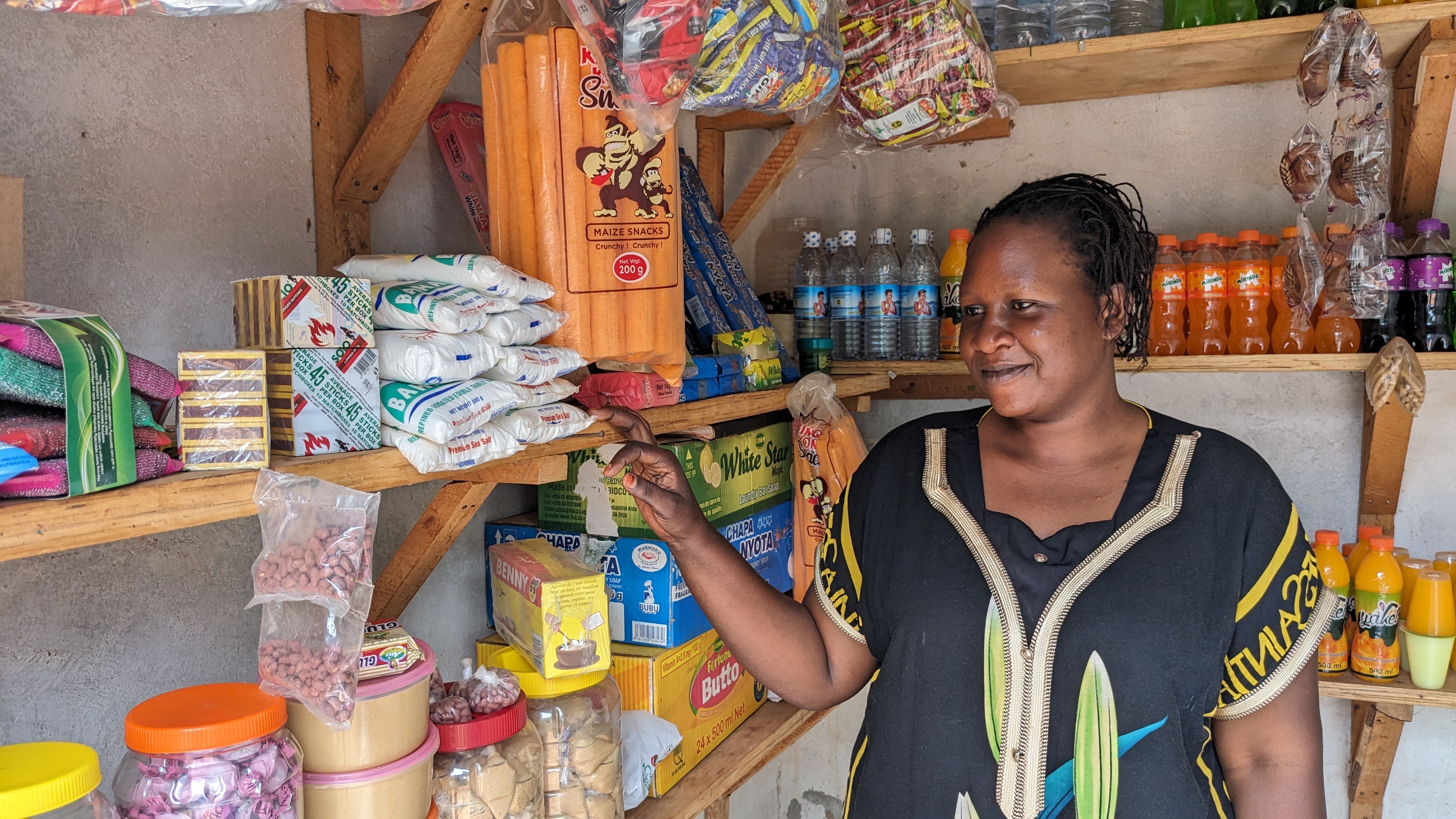The Washington Post reported on GiveDirectly’s work in Malawi to help people in poverty survive the climate crisis that they did not create. The article discusses a broader shift towards cash distributions as a preferred method of aid and highlights the urgency for more to be done in Africa where a third of the people still survive on less than $2.15 per day.
or scroll down to read a copy of it
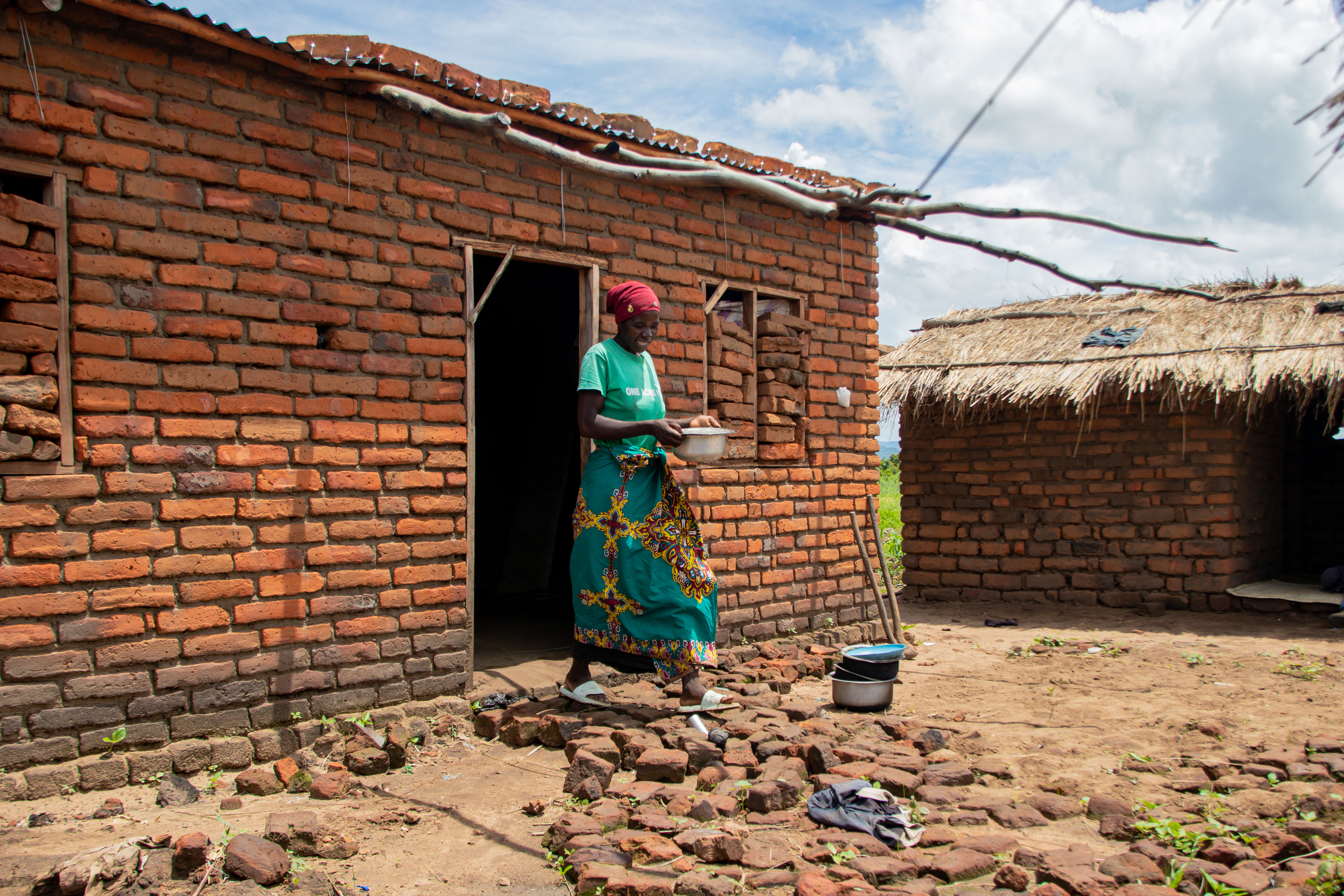
By Katharine Houreld
April 19, 2024
CHAMBA, Malawi — The cyclone tore through Magret Frank’s village two years ago, ripping apart the thatched mud huts. She dragged her four children from their beds just before the roof beams collapsed, and their chickens and clothes were swept away into the howling night.
“I cried inside. But I am the mother — I have to be strong,” said Frank, who has had three homes that were destroyed by cyclones. “So I told them, as long as we have life, there is a new dawn.”
But now, like her neighbors, she is sleeping through storms in a new brick house with an iron roof. The constellation of new homes is the product of a pioneering program that is Africa’s largest cash giveaway as measured by amount per person. It is part of a project that aims to revolutionize the way that aid is given to the poor: in a lump sum of cash with no strings attached.
The program is run by GiveDirectly, an organization founded by graduates of MIT and Harvard who work with prominent economists to identify the most efficient ways to reduce poverty. Donors include Twitter co-founder Jack Dorsey, philanthropist MacKenzie Scott, Facebook co-founder Chris Hughes and the founders of the graphic design tool Canva.
Lump sums are the most efficient way to give cash, according to a study of GiveDirectly programs released in December that compared the impact of three methods: in small transfers over 12 years; in small transfers over two years; or in a lump sum. Two years in, recipients of the lump sum have spent more money on health care, and more of their children have scored better on school exams, according to the study by MIT economics professor Abhijit Banerjee and others, including two GiveDirectly directors. The lump-sum recipients were also more likely to start a business and to make more money from their business.
The implications are far-reaching for families like Frank’s.
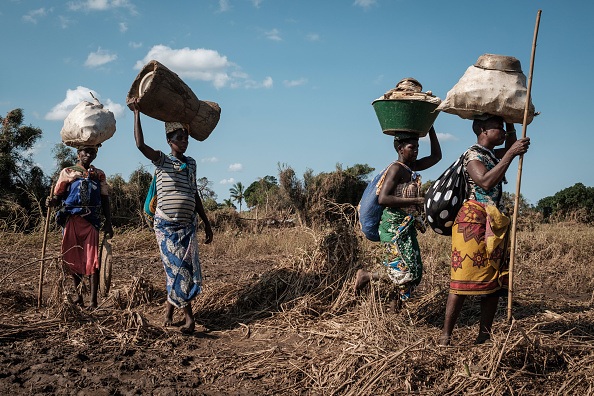
After the 2022 cyclone destroyed her home, her family slept in a six-foot-square thatched kitchen largely open to the elements. She wove grass mats to sell for 50 cents each, trying to save enough to rebuild. She said she couldn’t even dream of a brick home. It took her weeks of saving to replace her plastic bucket, the lost item she most mourned.
Then a stranger arrived with a wild proposition. Each household, including Frank’s, would be given $800 — more than she would usually earn in two years. Like most of her neighbors, she used the money to build a new house.
Now cyclones can’t wreck Frank’s food stores, kill her chickens or ruin her clothes and utensils. Village chief Edna Nikisi said the 2022 cyclone flattened 26 houses. This season, cyclones were strong but they blew down only four homes, all the old-style mud huts.
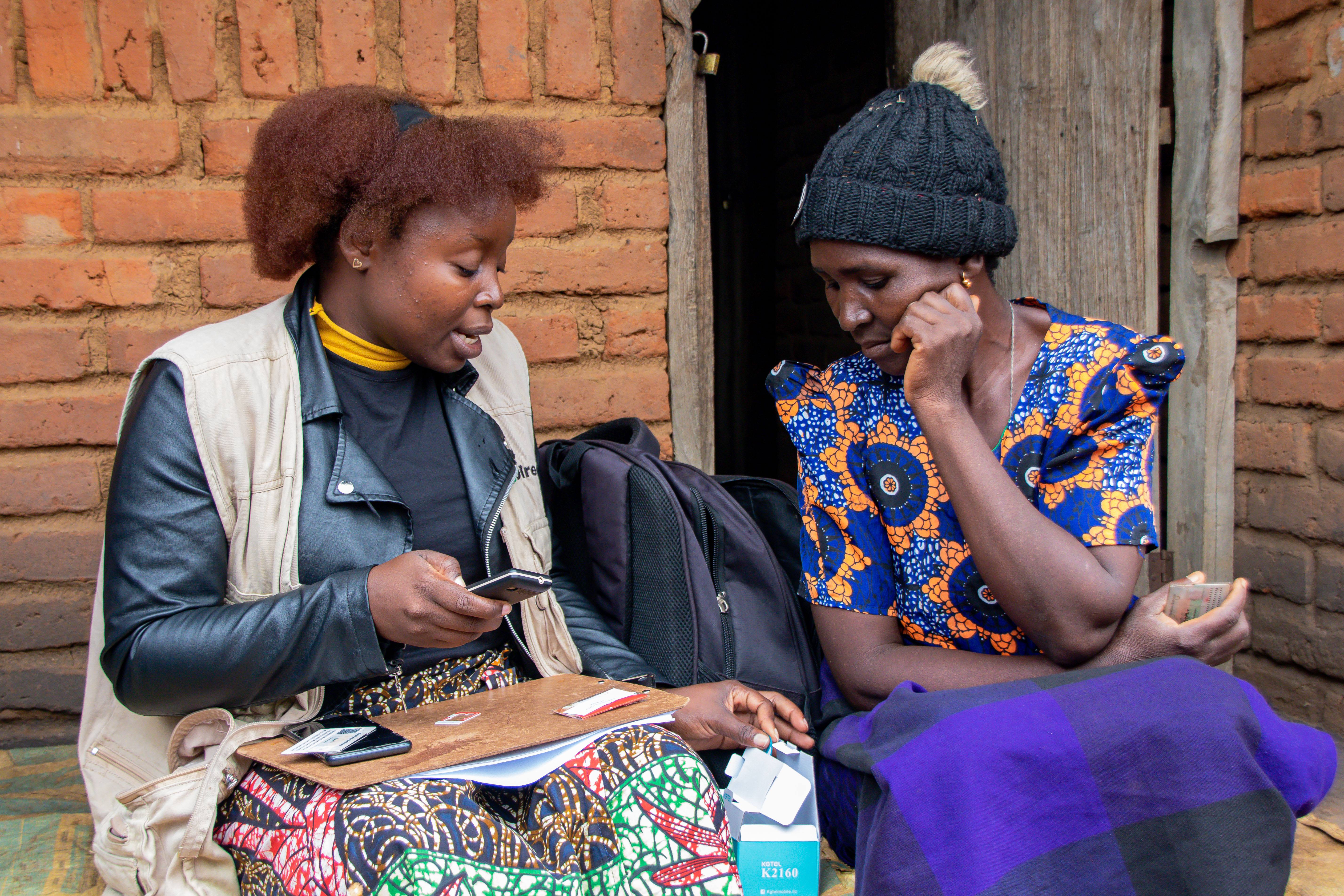
Global shift to cash
Frank benefited from a global push to distribute more aid in cash. Two decades ago, microfinance was the darling of the aid world. But it attracted predatory lenders and locked recipients into cycles of debt, and recent research has cast doubt over its long-term impact.
Traditionally, aid agencies distributed items such as food, livestock and laptops, but a frequent mismatch between donations and need meant items were often sold, stolen, broken or wasted, various studies found. So donors are increasingly moving to cash. Studies have repeatedly shown that cash is the most efficient form of aid when markets are functioning. New technology like mobile money makes it easy to send cash directly to the world’s poorest. Governments in Togo, Brazil, South Africa and Mexico have all introduced small cash payments for poor families.
Although cash and voucher programs are increasingly popular, growing from $6.6 billion in 2020 to $10 billion in 2022, they still account globally for only about 5 percent of development aid and just under 20 percent of humanitarian aid, according to a 2023 report by the CALP Network, a consortium of 90 aid groups. Such programs typically give out tiny monthly sums. They also sometimes carry conditions — such as school enrollment or vaccinations — and often suffer from “ineffective targeting, unsustainable funding, and irregular payment cycles,” economists Adam Salifu and Kennedy Makafui Kufoalor said in a 2024 study.
Paul Niehaus, co-founder and chairman of GiveDirectly, says cash transfers can’t replace traditional aid to build roads, police forces or hospitals, but they do give recipients more choices. Poor people usually know their needs better than a bureaucrat or aid worker, he said, and lump sums offer opportunities that stipends don’t. Tiny sums, he said, can stave off starvation but not transform a life.
The debate on how to lift people out of poverty is most urgent in Africa. Overall, global wealth has quadrupled in the past 30 years, but a third of the people in Africa still live in extreme poverty — about 100 million more than in 1990, according to the World Bank. That is due partly to rising populations and partly to factors such as war, poor governance and climate change. The ranks of the poor have increased even as money has poured in: Aid to African countries totaled $53.5 billion in 2022 — slightly more than half the $100 billion that the Brookings Institution last year estimated would be needed for direct cash transfers to eradicate extreme poverty globally.
Malawi, where fog-cloaked hills encircle verdant fields, is often called a development puzzle. It is fertile and has never fought a war. Since 2005, wealthy countries have spent $16.5 billion on development assistance to Malawi. But poverty has not decreased, the World Bank says, noting that for every three Malawians who moved out of poverty between 2010 and 2019, four were pushed back in by climate shocks.
Many families remain too poor to take advantage of newly built schools and clinics. Save the Children supports the school that serves Frank’s village, where shrieks of laughter drift among the neem trees. But when cyclones ruined books and uniforms, her children had to drop out because the items were too expensive for Frank to replace. Neither could she afford the bumpy motorbike ride down a long sandy track to a U.N.-supported clinic if her children contracted malaria or pneumonia sleeping outside.
Now, she can use both the school and the clinic.
Physician Alinafe Kachigwali said deaths at Mwima Health Center in Khongoni have fallen significantly since the GiveDirectly disbursement began. Now, women can pay for transportation to the clinic or even to a referral hospital if needed, she said. Double the number of women are coming in for five-month prenatal checkups, hospital records show, meaning complications are being detected sooner.
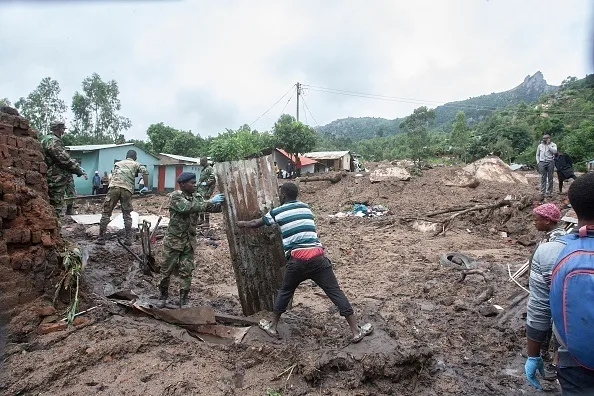
Lessons learned
GiveDirectly calculates that, including operating costs, it would need nearly $4 billion to give $550 to every adult in Malawi living in extreme poverty. So far, the program has given out $50 million to 160,000 adults there.
At first, GiveDirectly tried to target the poorest villagers by disbursing money only to those living in thatched-roof homes. But now even those with brick houses get cash. That helps reduce potential conflicts or cheating.
And those with stable living situations are more likely to use the cash to create jobs. A lanky, nearsighted tailor bought glasses and a sewing machine that tripled his income. A shop owner converted a cement room into a raucous nursery for 56 children and now employs three teachers. A farmer bought a solar fridge to sell cold drinks and a solar phone charger that he now rents out.
Sometimes, there are problems, including incidents of fraud and theft by staffers in the Democratic Republic of Congo and Uganda. In each case, GiveDirectly said it hired external investigators and changed its systems. Outsiders also try to game the system by moving into qualifying villages, but GiveDirectly says a census conducted beforehand weeds them out.
Malawi’s finance minister, Simplex Chithyola, said the government was coordinating closely with GiveDirectly. “If you dictate and impose a particular service provision, it denies [poor families] the right to a choice,” he said. “The wish is to do as GiveDirectly is doing, but quite a number of people are in need.”
